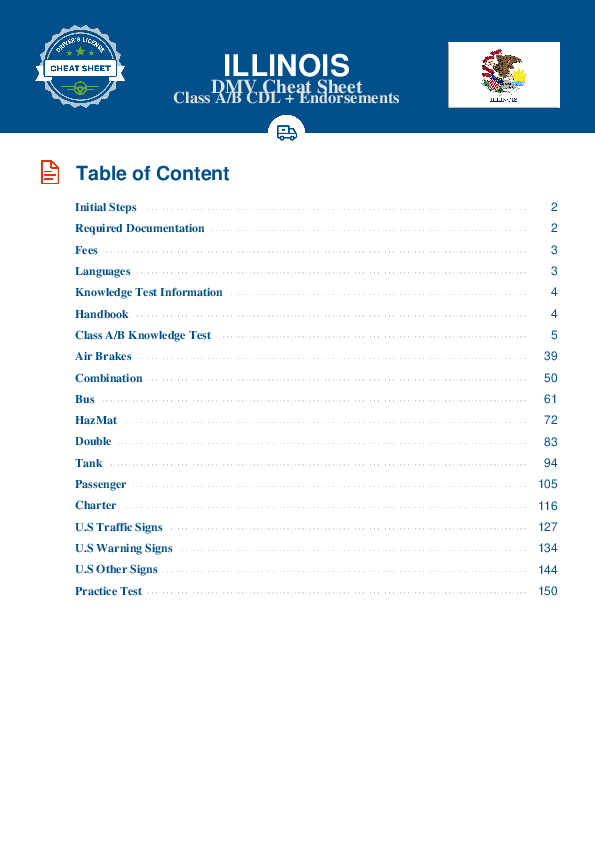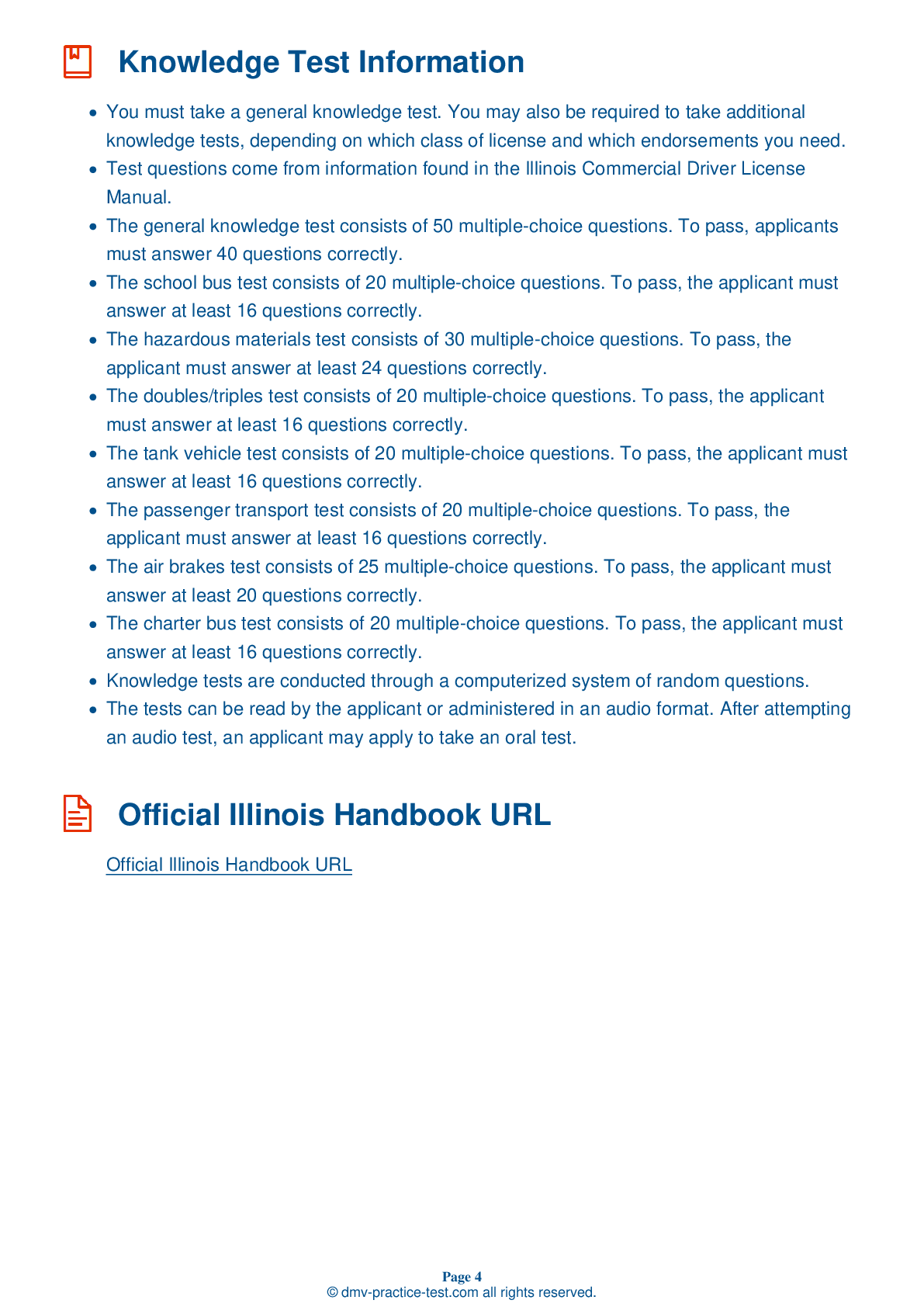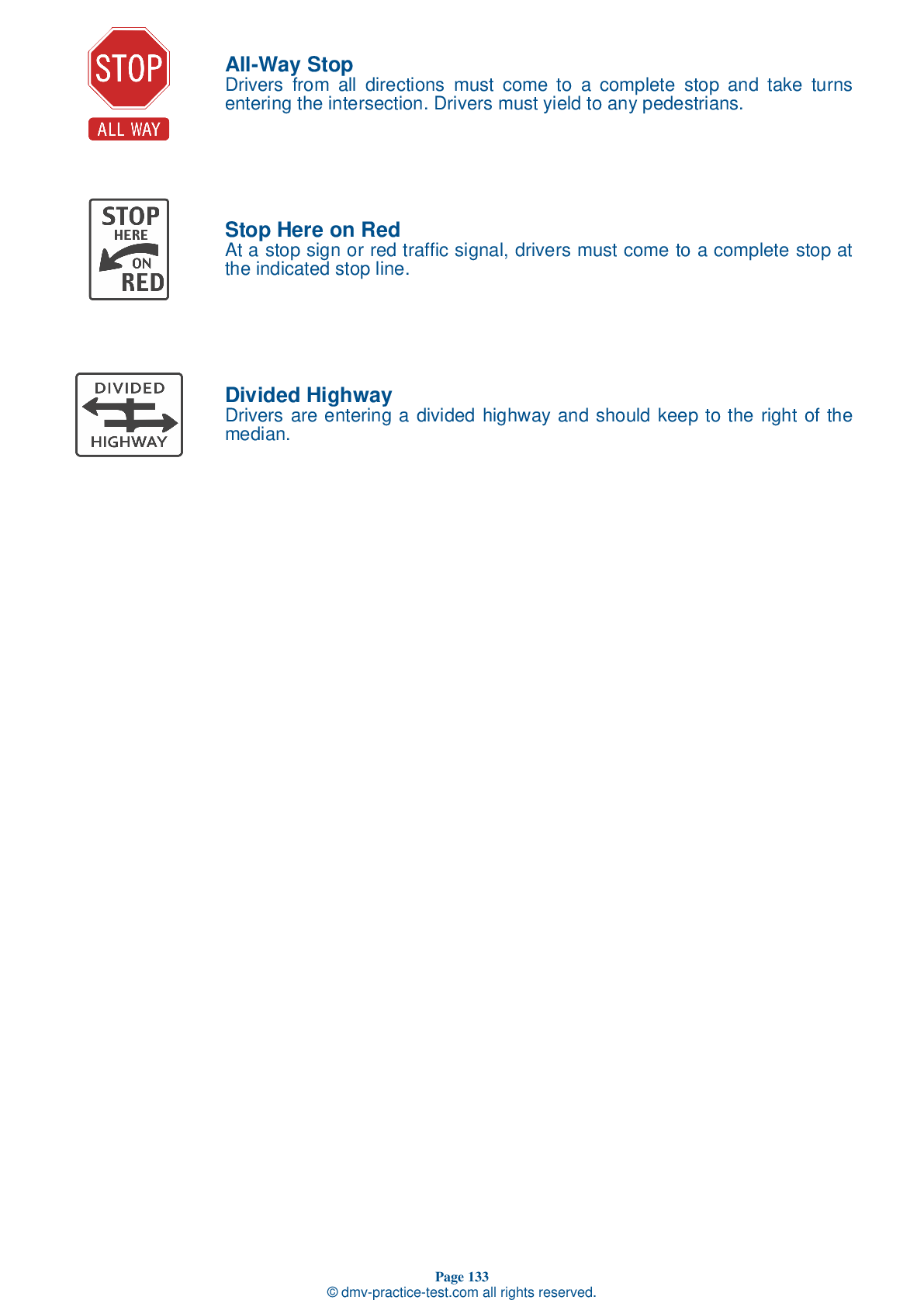Combination #2
Combination Vehicles Practice Test | Illinois 2025 #2 Page 2 of 3
Train for FREE online with our Illinois CDL combination vehicle test. The official exam test consists of several obligatory parts, with all of them checking your knowledge of different blocks of road rules. If you need to obtain a IL combination license in 2025, practice as much as possible. Free sample tests published on our website will help you check and improve your knowledge and boost your grades. Please bear in mind that DMV requirements for issuing a combination license may vary from state to state.
20
16
20
8 . When backing up to couple a trailer, you should position the tractor:
At a 60-degree angle in front of the trailer.
When backing up to couple a trailer, you should position the tractor directly in front of the trailer. Trying to couple while backing at an angle could cause the trailer to move and the landing gear to break.
9 . To help prevent a rollover, cargo should be:
Placed on the driver’s side of the trailer.
To reduce the risk of a rollover, the weight of cargo in a trailer should be kept as low to the ground as possible. Weight should not be placed primarily on one side of the trailer as this could make the trailer lean, increasing the risk of a rollover.
10 . The best way to recognize that your trailer has begun to skid is by:
Listening to the radio.
The earliest and best way to recognize the beginnings of a trailer skid is by seeing the trailer veer off-course in your mirrors.
11 . Proper coupling technique:
Can be learned over time.
Knowing proper coupling and uncoupling technique is fundamental to the safe operation of combination vehicles. Improper coupling can be very dangerous.
12 . To prevent a rollover, cargo should be:
Loaded with most weight on the driver’s side of a trailer.
To reduce the risk of rollover, the weight of cargo in a trailer should be centered and spread out as much as possible. The weight of the cargo should also be kept as low to the ground as possible.
13 . If you need to back your trailer but cannot back up in a straight path, you should:
Always turn to your right.
If you need to back your trailer but cannot back up in a straight path, you should back on a curved path toward the driver's side of the vehicle. This will permit you the best possible visibility while backing.
14 . How many air lines does a combination vehicle have?
Four
Every combination vehicle has two air lines: the service line and the emergency line.
2025 Illinois | Frequently Asked Questions
A CDL Class A license in Illinois is a commercial driver's license that permits the holder to operate any combination of vehicles with a Gross Combination Weight Rating (GCWR) of 26,001 pounds or more, provided the vehicle(s) being towed is/are over 10,000 pounds. This typically includes tractor-trailers and truck and trailer combinations.
With a Class A CDL license in Illinois, you can operate vehicles such as tractor-trailers, truck and trailer combinations, tank vehicles, livestock carriers, and flatbeds. Additionally, it allows the operation of all vehicles covered by Class B and Class C, provided the driver has the appropriate endorsements.
To obtain a Class A CDL license in Illinois, you must be at least 18 years old (21 for interstate driving), possess a valid Illinois driver's license, pass a vision test, and complete a written knowledge exam. You're also required to pass a skills and road test in the type of vehicle you plan to drive. A medical examination report is also typically required.
To qualify for a Class A CDL license in Illinois, you must be at least 18 years old. However, to drive across state lines or to carry hazardous materials, you must be at least 21 years old. Also, you'll need to pass both a written knowledge test and a skills test.
While specific endorsements aren't required for a Class A CDL license in Illinois, additional endorsements can expand the types of vehicles you're allowed to drive or cargo you can transport. For example, an H endorsement permits the transportation of hazardous materials, while a P endorsement allows for the transportation of passengers.
The Class A CDL skills test in Illinois encompasses three parts: a pre-trip vehicle inspection, a basic vehicle control test, and a road test. Examinees must demonstrate their ability to inspect their vehicle, control the vehicle in various situations, and drive safely in normal traffic conditions.
Yes, limitations can be imposed on Class A CDL license holders based on factors like medical conditions or lack of certain skills. For example, a driver may receive a restriction if they can't operate a manual transmission or if they need adaptive equipment to drive. Restrictions are noted on the CDL and must be adhered to while operating commercial vehicles.
Yes, in Illinois, the written Class A CDL test is available in several languages besides English, including Spanish. However, federal law requires that all CDL holders understand English well enough to converse with the general public, understand highway traffic signs and signals, respond to official inquiries, and make entries on reports and records.
Yes, accommodations can be made for the Class A CDL written test if you have a disability. These may include providing the test in an alternate format or allowing additional time. It's important to contact the Illinois Secretary of State's office in advance to discuss your needs and make necessary arrangements.
Yes, you can retake the Class A CDL written test in Illinois if you don't pass on your first attempt. However, you'll need to wait at least 24 hours before retaking the test. Also, keep in mind that each retest may require an additional fee. It's advisable to study thoroughly before attempting the test again.



